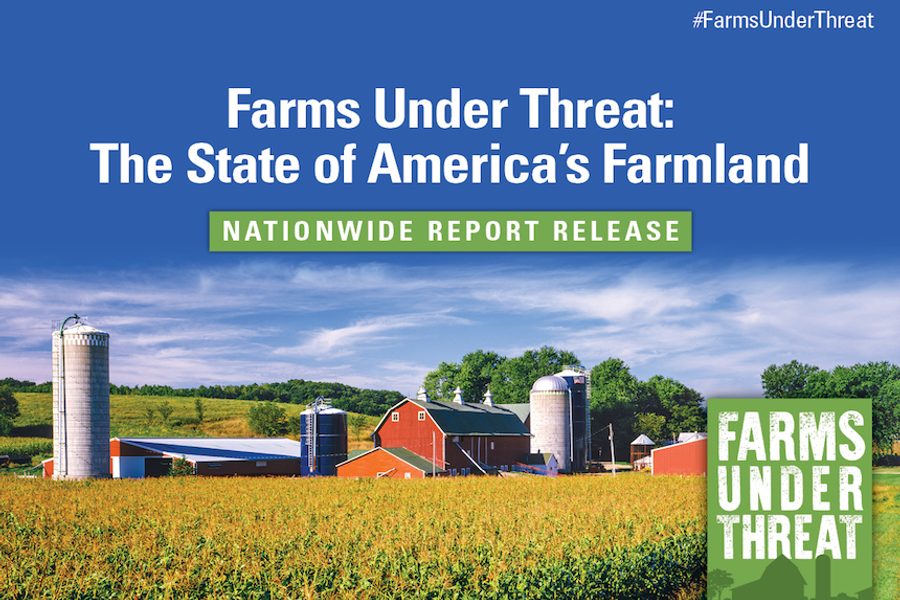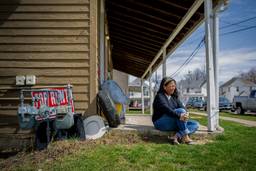In Less Than One Generation, We’ve Lost More Than 10 Million Acres of the Best U.S. Farmland
Rural America In These Times

(Editor’s Note: The American Farmland Trust (AFT), a non-profit founded in 1980 to protect U.S. farmland and water supplies from encroaching development, has just released Farms Under Threat: The State of America’s Farmland—the first in a series of reports that will track past, present and future threats to agricultural resources nationwide. This first report finds that, between 1992 and 2012, over 30 million acres of farmland — an area roughly equivalent to the landmass of New York State — were irreversibly lost to development. Furthermore, according to the organization’s research, nearly 11 million acres of the converted farmland were among the “best land for intensive food and crop production.” Below is AFT’s introduction and a link to the full report.)
The United States is blessed with a remarkably productive agricultural landscape. Cropland, pastureland, rangeland, and woodland support a regionally diverse food and farming system capable of ensuring domestic food security. Agricultural land contributes to state and local economies, supplies lucrative export markets, and bolsters the nation’s balance of trade. These exceptional natural resources sustain valuable wildlife habitat, provide flood control and fire suppression, scenic views, and resources for hunting and fishing. This land also acts as an enormous carbon sink, drawing down carbon from the atmosphere, which helps combat climate change. By 2050, the demands on agriculture to provide sufficient food, fiber, and energy are expected to be 50 to 70 percent higher than they are now. Given a limited land area in the United States and the need to feed and house an increasing number of people, it is more important than ever to protect the agricultural land and natural resources needed for long-term sustainability.
This call for action is documented and reinforced by the findings of Farms Under Threat: The State of America’s Farmland by American Farmland Trust. The report’s research shows that between 1992 and 2012, almost 31 million acres of agricultural land were irreversibly lost to development. That is nearly double the amount of conversion previously documented and is equivalent to losing most of Iowa or New York. As alarming, this loss included almost 11 million acres of the best land for intensive food and crop production. This is land where the soils, micro-climates, growing seasons and water availability combine to allow intensive production with the fewest environmental impacts. These precious and irreplaceable resources comprise less than 17 percent of the total land area in the continental United States. Their conversion was equivalent to losing most of California’s Central Valley, an agricultural powerhouse.
Over 20 years ago, AFT released the groundbreaking report, Farming on the Edge. This compelling study and extensive mapping gained global media attention by showing how sprawling development consumed America’s highest quality farmland in critical regions across the country. Now, new threats to the nation’s agricultural lands create a pressing need to update the old analyses and assess threats to America’s agricultural land in the 21st century. Improvements in the availability of national data and models now enable AFT to more accurately track the scale and spatial location of the threat of development to the nation’s agricultural land. They also make it possible to assign values to measure the land’s productivity, versatility, and resilience. These advances make it possible for AFT not only to examine past conversion patterns but also to forecast future development patterns likely to occur without better land use planning and policy intervention.
These analyses underpin Farms Under Threat, AFT’s multi-year initiative to complete the most comprehensive assessment of the loss of U.S. farmland and ranchland ever undertaken, both past and future. AFT’s goal is to document the threats and offer policy solutions to ensure the long-term protection and conservation of agricultural land in the United States to sustain an expanding population and protect biodiversity. This first report, Farms Under Threat: The State of America’s Farmland, examines the nation’s irreversible loss of agricultural land to development between 1992 and 2012. A subsequent report will analyze state-level data on past farmland conversion and the effectiveness of state-level farmland protection policies. In a third report, Farms Under Threat will assess a range of future threats, forecast potential impacts to 2040 and recommend effective policies that help conserve agricultural land.
AFT is working with Conservation Science Partners (CSP), a non-profit conservation organization, to ensure these assessments are grounded in reliable data and strong science. This partnership is supported by the USDA’s Natural Resources Conservation Service (NRCS). A national Advisory Committee provided additional guidance, and NRCS shared data and reviewed findings. Farms Under Threat significantly advances our understanding of the patterns of past farmland conversion and provides information about the location, quantity, type, and quality of the agricultural land lost to development in the continental United States between 1992 and 2012. These maps and data can serve to improve agricultural land conservation and permanent protection across the nation.
(Click here to view Farms Under Threat: The State of America’s Farmland in its entirety and for information about America Farmland Trust visit farmland.org.)

I hope you found this article important. Before you leave, I want to ask you to consider supporting our work with a donation. In These Times needs readers like you to help sustain our mission. We don’t depend on—or want—corporate advertising or deep-pocketed billionaires to fund our journalism. We’re supported by you, the reader, so we can focus on covering the issues that matter most to the progressive movement without fear or compromise.
Our work isn’t hidden behind a paywall because of people like you who support our journalism. We want to keep it that way. If you value the work we do and the movements we cover, please consider donating to In These Times.






